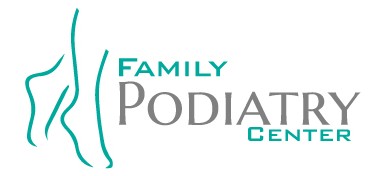Dr Lawrence Kosova of Family Podiatry Center in Naperville Illinois discusses ankle sprains and ligament and tendon injuries.
Overuse is one of the most common reasons foot and/or ankle injuries occur. Athletic Atcivities, Weekend Warriors, and Running populations alike tend to describe their injury as follows:
- “The area around my foot and ankle hurts, is swelling, and/or turning color…”
- “At times, my ankle tends to roll or, “gives out…”
These are all indicators that an ankle sprain has occurred. Ankle sprains are common in sports such as Basketball, Soccer, Baseball, and Football and occur for a variety of reasons.
Ankle sprains commonly occur from:
- Running down the block
- Tripping into or over a hole
- Stepping on an unstable object such as a toy.
Does your ankle “give out?” If so, it’s still a sprain. Anytime you sprain an ankle, your twisting, and tearing ligaments. An indicator of this would be pain, swelling, and discoloration around the area.
Athletes:
There’s a lot of incentive to stay in the game, and many athletes, for one reason or many, make that detrimental decision to “play through the pain” which can result in further aggravation to an earlier foot or ankle injury.
Athletes should pay special attention to prevent injuries from getting worse especially if there’s an intense routine built around athletic conditioning. Untreated ankle sprains, can lead to bone fractures in your foot in addition to tendon ruptures, ligament thickening and re-injury of already compromised areas.
Ligaments:
There are three ligaments that support the ankle. Before going any further however, let’s explain what a ligament is and how it differs from a tendon. A ligament is any soft tissue structure that goes from one bone to another.
How does that differ from a tendon? A tendon is the part of the tissue that actually attaches the ligament to the bone.
To spare you the mispronunciation of incredibly long Latin words, we’ll refer to these three primary ligaments the support the ankle as #1, #2, and #3.
Ligament #1 – is the strongest of the three
Ligament #2 – Often this ligament is stretched. Once this happens, the ligament heals and remains in taht stretched position. This is commonly seen in ballet dancers.
Ligament #3 –
Overuse Injuries
Are common in foot and ankle injuries. If you think you’ve suffered an ankle of foot injury, Apply the RICE method and consult your physician.
The RICE Method (Rest, Ice, Compress, Elevate)
R: Rest
I: Ice
Keeping the injury cool will help reduce pain and swelling.
Out of ice: Frozen vegetables such corn and peas are great alternatives in the event that your ice maker is broken. That said, here’s a few precautions to take when icing your foot or ankle.
- You can ice an injury for 20 minutes every 2 hours around and on the pain area to help reduce inflammation.
- Icing can be done for up to 3 to 4 days after an injury or even longer depending on the severity of the injury that may have longer heal times.
C: Compress
- Soft cast, or ace bandage which is available at your local convenience and drug stores.
- You want start at the tip by the toe and wrap it about 1/4 all the way up past the injured part to help push the swelling out and up the leg. If the injury is higher the bandage would be wrapped above ther area to immobilize the are because we don’t want the area to have movement.
- Bandaging during Ice? Do not ever apply ice directly to the skin as this could create another injury such as frost bite. Again, 20 minutes of icing every every 2 hours with ice ON TOP of your soft cast or ace bandage will help reduce the swelling over time.
E: Elevation
- Place on top of a pillow. *note – foot does not have to be elevated higher than the heart.
Preventative Measures
- Strengthening, and stretching before and after activity.
- Basic Exercises
Flex your feet and ankle twice a day by spelling out the alphabet using your big toe, or doing “Figure 8’s” with your feet. - We encourage people to take up walking campaigns as a sign of fitness and good health.
